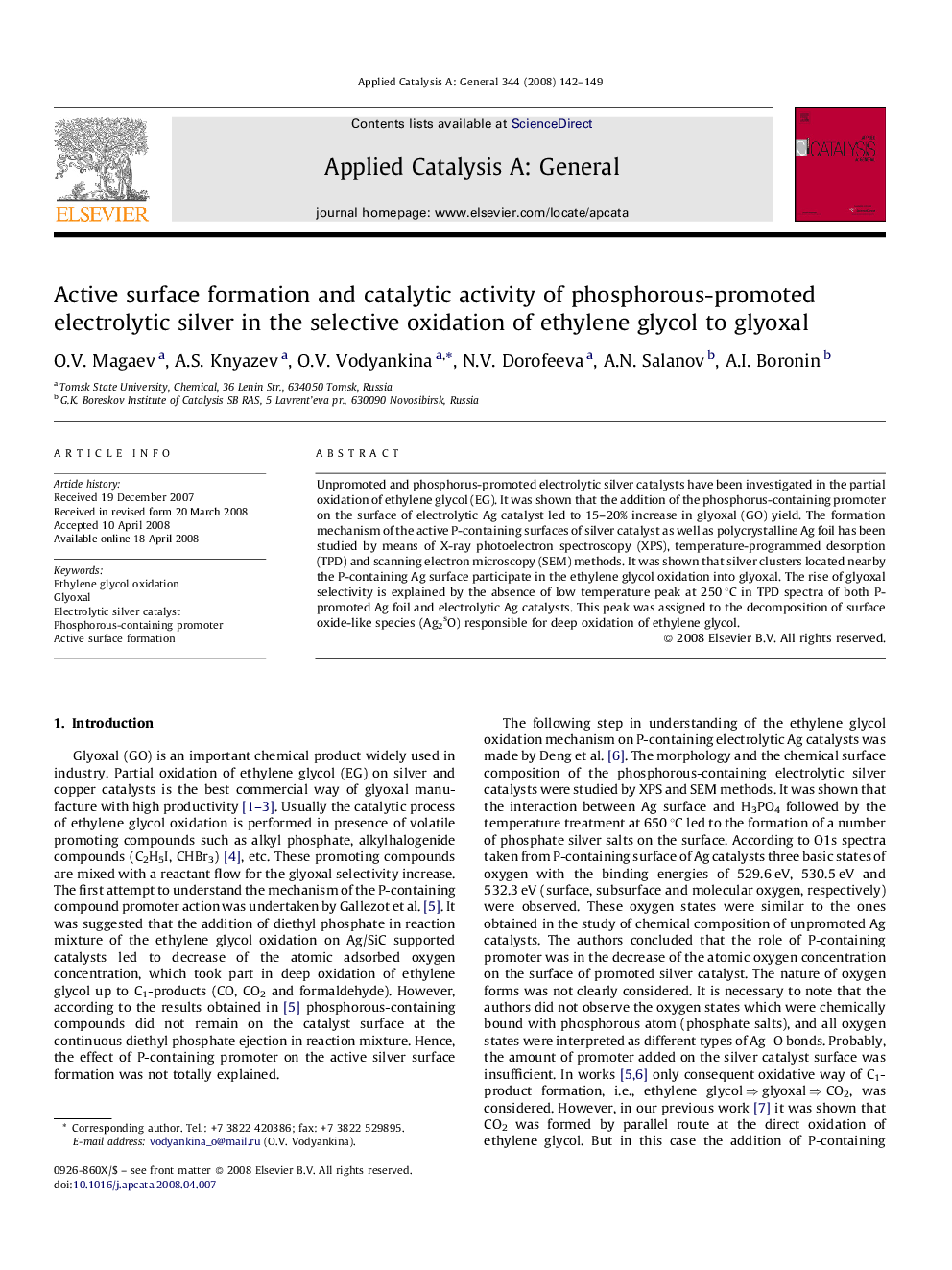| Article ID | Journal | Published Year | Pages | File Type |
|---|---|---|---|---|
| 43110 | Applied Catalysis A: General | 2008 | 8 Pages |
Unpromoted and phosphorus-promoted electrolytic silver catalysts have been investigated in the partial oxidation of ethylene glycol (EG). It was shown that the addition of the phosphorus-containing promoter on the surface of electrolytic Ag catalyst led to 15–20% increase in glyoxal (GO) yield. The formation mechanism of the active P-containing surfaces of silver catalyst as well as polycrystalline Ag foil has been studied by means of X-ray photoelectron spectroscopy (XPS), temperature-programmed desorption (TPD) and scanning electron microscopy (SEM) methods. It was shown that silver clusters located nearby the P-containing Ag surface participate in the ethylene glycol oxidation into glyoxal. The rise of glyoxal selectivity is explained by the absence of low temperature peak at 250 °C in TPD spectra of both P-promoted Ag foil and electrolytic Ag catalysts. This peak was assigned to the decomposition of surface oxide-like species (Ag2sO) responsible for deep oxidation of ethylene glycol.
Graphical abstractP-containing electrolytic silver catalysts have been investigated in the partial oxidation of ethylene glycol (EG). It was shown that the addition of the phosphorus-containing promoter on the surface of electrolytic Ag catalyst led to the growth of glyoxal (GO) yield up to 15–20% mass. The glyoxal selectivity rise is explained by the absence of low temperature oxygen forms in temperature-programmed desorption (TPD) spectra.Figure optionsDownload full-size imageDownload as PowerPoint slide
